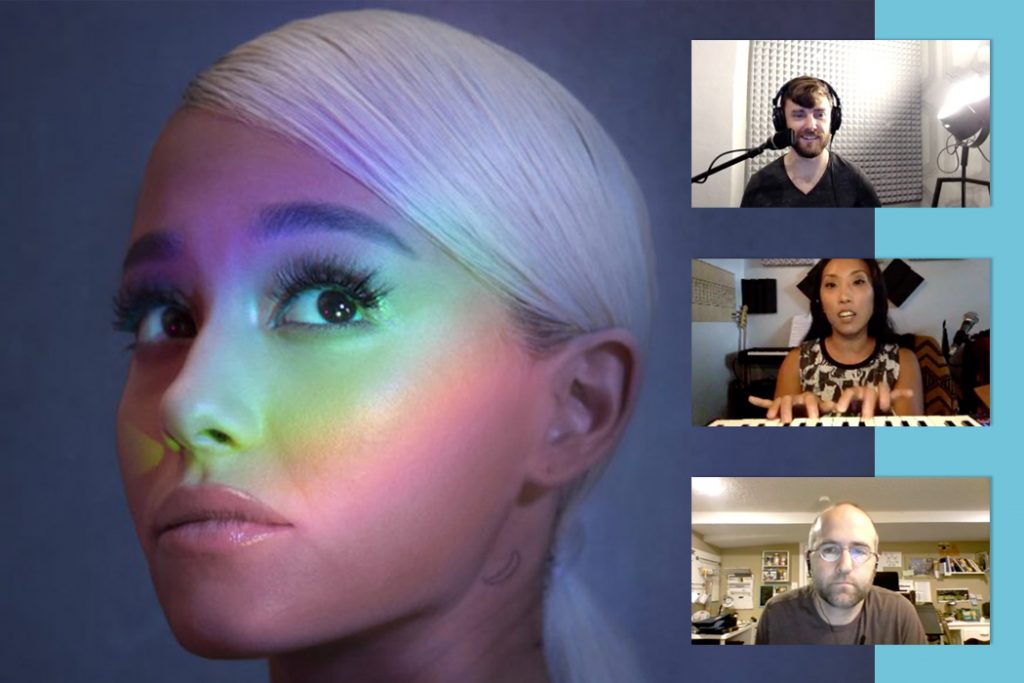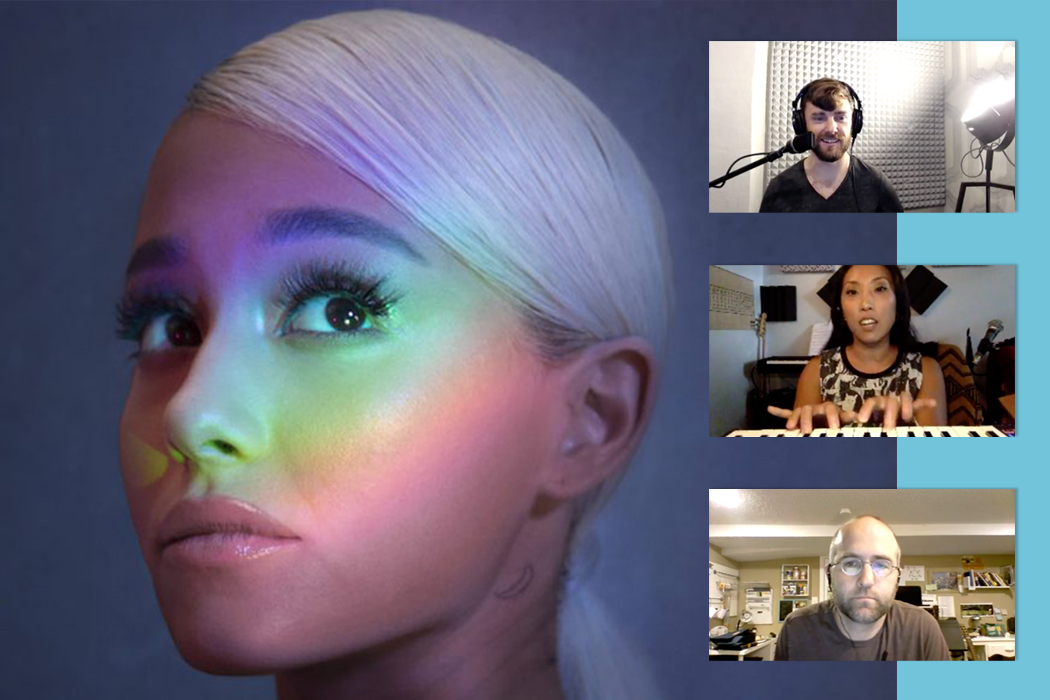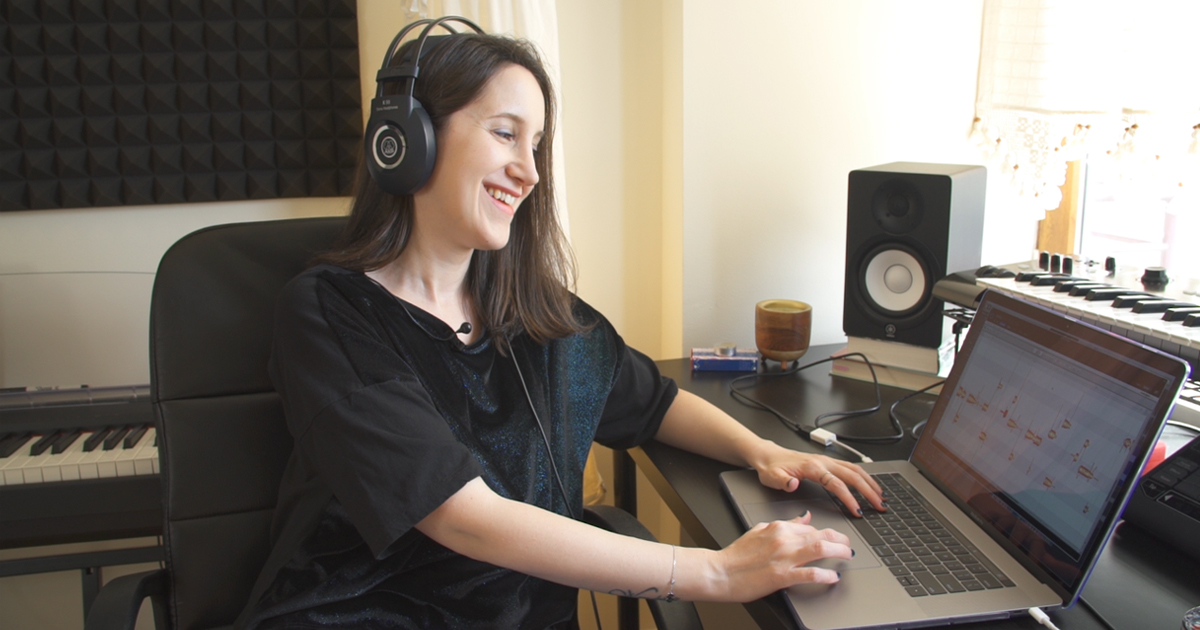+ Welcome to Soundfly! We help curious musicians meet their goals with creative online courses. Whatever you want to learn, whenever you need to learn it. Subscribe now to start learning on the ’Fly.
Last week I had the distinct pleasure of sitting down with super-knowledgeable music theory super-nerds Dean Olivet and K Marie Kim, and picking their brains about a topic that’s always been near and dear to my heart — weird harmony choices in modern pop music, or, in other (some might say fighting) words: more interesting harmony choices in pop music.
We here at Soundfly often take to Facebook Live for what we call “Office Hours,” open-ended discussions with Soundfly Mentors and other experts in the field about the most interesting and current topics in music every month, with crowdsourced questions from YOU! (Join our newsletter to be notified of upcoming discussions and to submit your questions.)
Last week, as a vessel for this particular discussion, we took a closer look at Ariana Grande’s absolute killer “no tears left to cry” to examine the precise and fluid ways the songwriters move from a minor-key to a major-key tonality, and back again. And we weighed out the potent emotional effects of these shifts when used smartly, among and alongside other elements like the production, the arrangement, lyrical alignment, and more. Here are some takeaways from the discussion, and how you can use these same tools in your own writing. Check out the video below or on our Facebook page.
More often than not, Top 40 tunes stick to the diatonic harmony rule book — just playing the tried-and-true chords we’re all so used to hearing over and over again. But every so often, a breakout from a massive pop hit does something a bit unconventional, or even tricky. Enter Ariana Grande’s “no tears left to cry.”In this Soundfly Office Hours session, we’ll analyze the smash Ariana Grande hit and discover the music theory tricks and acrobatics that lift this modern masterwork above its peers. Then, we’ll discuss strategies for incorporating these techniques into your own songwriting process.As always, this event will include a live audience Q&A, so post your questions for our music theory experts!
Posted by Soundfly on Thursday, August 2, 2018
“no tears left to cry” is in A minor
While tonal and key centers are often muddy in pop music, we discovered plenty of evidence to support that, overall, it is safe to notate and discuss this tune as definitively in the key of A minor. Here are a few key pieces of supporting evidence:
1. The song starts boldly and firmly on an A minor chord. Downbeats hold a ton of power when it comes to our perception of a key center or tonal “home base.” In this case, the song boldly enters on a languid, ornamental rendition of the hook, starting right on an A minor chord and proceeding through a series of highly functional diatonic chord moves.
“This is a thing a lot of old Motown folks use to do… come in real hot with the hook up top — and that’s what establishes that A minor tonality.” – K Marie Kim
2. Every chorus starts with a high melody note of C natural, right on the downbeat. The chorus is that section of a pop tune that gets the most attention and stands out most to an audience. Therefore, in terms of which “blocks” of the song have the most influence and importance, the chorus reigns supreme, and this chorus sits squarely in A minor.

3. There’s a whole lot of C major in this tune. At the end of each chorus section, there’s a whole block of C major — four long bars. It helps firmly root this tonality as predominantly minor.
Ninths are the driving force of tonal ambiguity here
Ninths play a major role in the melody and the harmony of “no tears,” and it serves as a key pivot point between emotional qualities throughout the song.
1. Melodically, Ariana sings the ninth scale degree, B, to pivot between minor and major tonal moments. In the verses, even though the first chord is of a major quality, the melody largely avoids major third scale degrees, drawing out the wait for only the most particular moments to drive home that positive turn towards hope. Only in the third bar do we taste the sweetness of a downbeat C# accentuating the A major chord — and only to quickly dip back down to a C natural in the very next bar, over the G major chord.

2. Harmonically, the verses add ninths to each chord to effectively warm and flush out the tonality. As Dean astutely observed, each chord in the verse part represents not a simple triad, but a very particular voicing of each chord that includes a root, a second, a major third, and a perfect fifth, in that order.

The crunchiness of those close intervals (the major seconds from A to B and B to C♯, and the similar distances between the other chords’ intervals) creates a sort of lush fullness of tone that helps break up the overt “majorness” of these chords, opting instead for a more complex and, ultimately, nuanced richness.
+ Learn production, composition, songwriting, theory, arranging, mixing, and more — whenever you want and wherever you are. Subscribe for unlimited access!
Constant structure chords sound cool, too!
K Marie offered an alternative way of looking at these three verse chords (Aadd9, Fadd9, and Gadd9), and where they came from — constant structure.
“Constant structure is taking that exact chord quality and putting it on a chord that shouldn’t have that quality, in that diatonic scale.” – K Marie Kim
If you just said to yourself, “Wait… what?” Don’t worry. You’re not alone. Let’s break it down!
This is a technique best illustrated on guitar. Say you’re playing a barred major chord with a G root. That’s a bar on the third fret, the third finger on the A string’s fifth fret, and the second finger on the G string’s fourth fret.
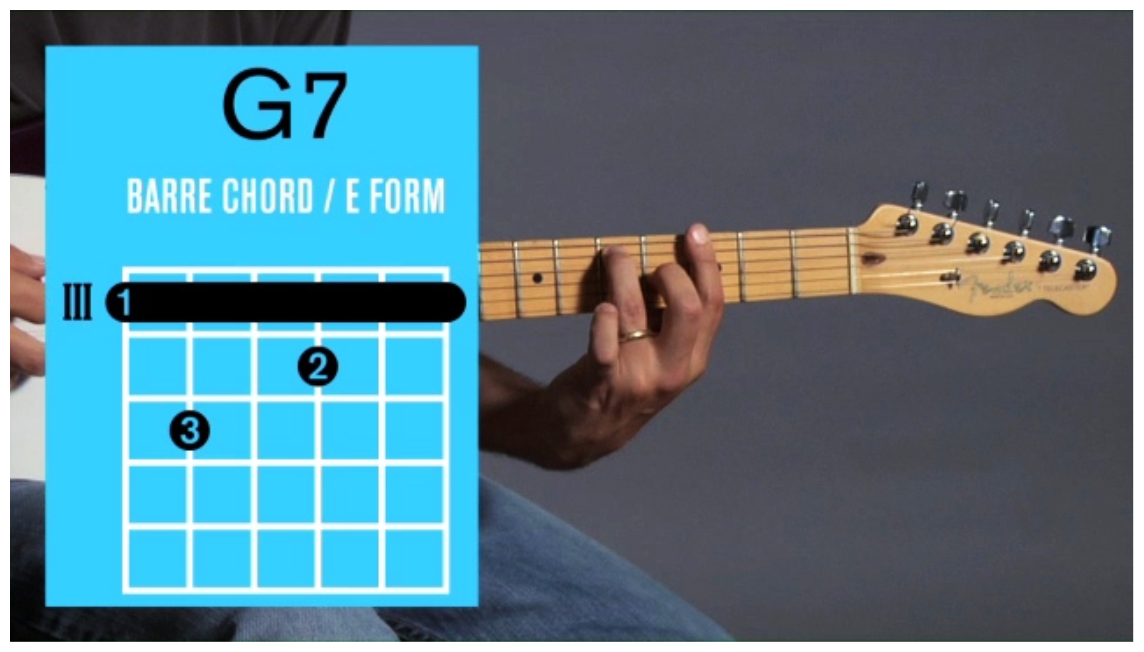
Now, check out this B7 chord. That’s a bar on the seventh fret, the third finger on the A string’s ninth fret, and the second finger on the G string’s eighth fret.
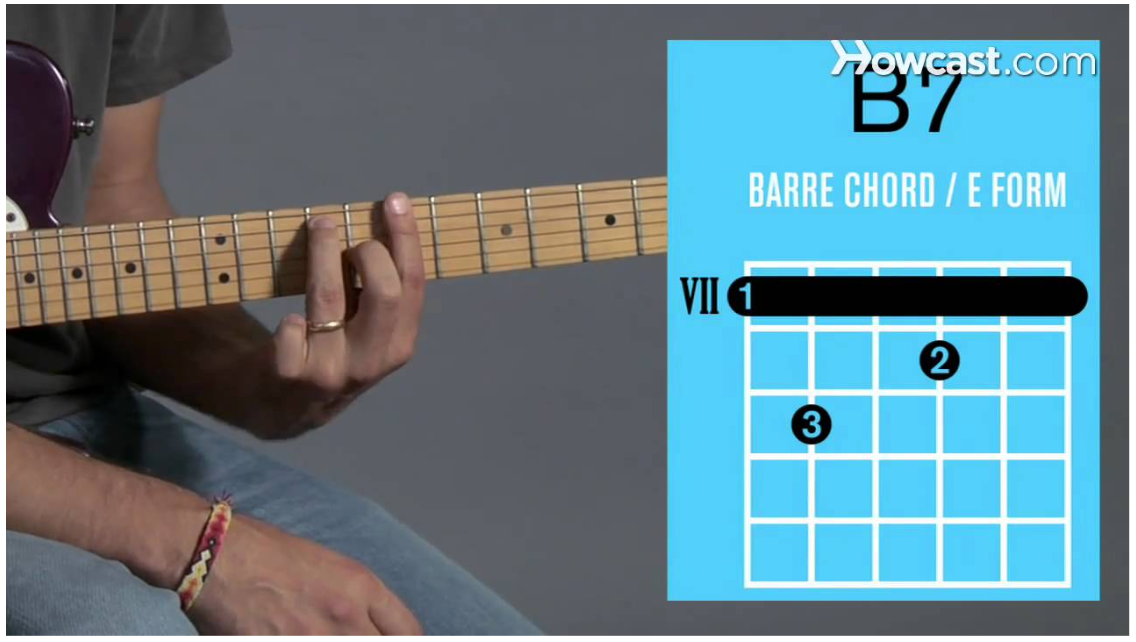
Just looking at the hand itself, you can see plain as day that the player hasn’t had to adjust his fingering. Same chord, same voicing, same intervals, everything — only the fretboard has shifted. That’s what K Marie is talking about when she says “constant structure.” Looking at the notes in those two chords, however, we can see that these chords come from different scales.
G7 — G, B, D, F
B7 — B, D♯, F♯, A
Right away, from a theoretical standpoint, we can see that those two chords couldn’t possibly come from the same scale. Yet, they have a certain interesting quality about them that works. That’s the comparison of what’s at play in “no tears,” but with major-add-nine chords. It’s like guitar-inspired synth writing. Very cool!
The best way to arrive at this sound is through playful experimentation
“I still write songs just doinking around… I’ll only use music theory if I’m stuck.” – Dean Olivet
It’s important to remember that, as fun as nerding out over music theory tricks can be, it’s important to let your own creativity guide the way when you sit down to write. Learn these tools, learn what they’re capable of and how other master songwriters have used them, but don’t get bogged down by diatonicism. Leave room for creative experimentation and open-ended chord structures.
Recap: the takeaways
- Harmonic rhythm is super important for determining a tonal center. If you want to establish a key center or create a moment with a new key center, put it on the downbeat!
- Replacing only the minor-key root chord (in this case, A minor) with the parallel major chord (A major) gives a very hip, hopeful, uplifting sound.
- Ninths are helpful tools for creating a bridge between parallel major and parallel minor keys, because they exist in both keys.
- Constant structure major triads, with roots separated by a whole tone (e.g., F major, G major, and A major) have a cool sound with some Lydian undertones, depending on how far from the key center they get.
- Borrowing chords from other modes (“modal interchange”) is rad, and you should try it. It worked for Bach, so it can work for you!
Want to get all of Soundfly’s premium online courses for a low monthly cost?
Subscribe to get unlimited access to all of our course content, an invitation to join our members-only Slack community forum, exclusive perks from partner brands, and massive discounts on personalized mentor sessions for guided learning. Learn what you want, whenever you want, with total freedom.
